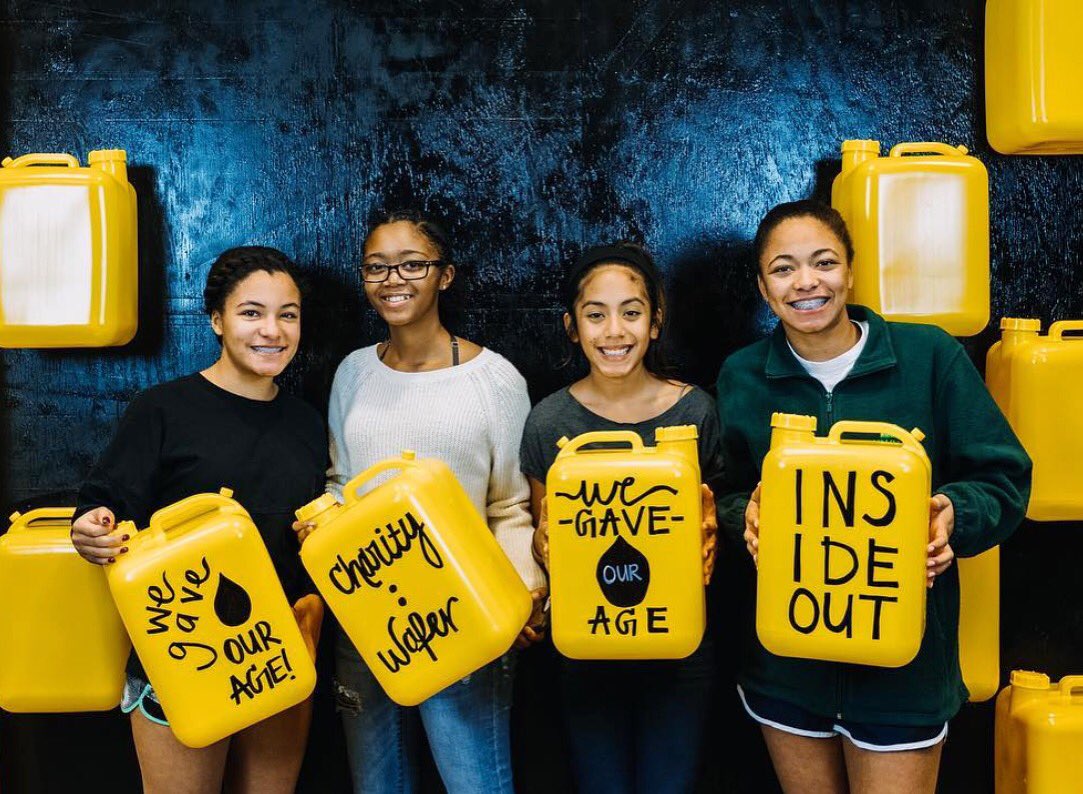
Every nonprofit is fighting for more than just funding. You're competing for belief—for the emotional buy-in that turns passive supporters into active champions. But when everyone’s talking about purpose, how do you make yours impossible to ignore?
The answer isn’t just in what you do. It’s in how you present what you do. That’s where nonprofit branding comes in.
When done right, branding your nonprofit clarifies your mission, rallies your audience, and builds credibility that lasts. This is about anchoring everything you do in a brand that feels true, looks cohesive, and drives connection at every touchpoint—from donor emails to volunteer recruitment to program execution.
This guide breaks down the strategy, the process, and the proof behind a strong nonprofit brand—and how you can build one that actually moves people.
Why Branding Is Crucial for Nonprofits
Many nonprofit leaders still think of branding as a luxury—something that belongs in the corporate world or comes later, “when we have more time or money.” But the truth is, a clear and consistent brand is one of the most powerful levers a mission-driven organization can pull to expand its impact.
Your brand is how people recognize and remember your organization. It’s what they see on your website, hear in your messaging, and feel when they interact with your team. It’s shaped by your tone, your visuals, and the way you talk about your work. Branding for nonprofit organizations helps make that experience clear and consistent. When someone decides to donate, volunteer, or partner with you, your brand often makes the difference. It helps people trust you—and choose you.
Strong branding helps nonprofits establish legitimacy. It conveys professionalism, builds confidence, and creates a sense of reliability, especially for first-time donors or partners. But even more importantly, it serves as a unifying tool internally. A well-articulated nonprofit brand aligns teams, guides decisions, and keeps everyone, from staff to board to volunteers, centered on the same mission and message.
Whether you're a grassroots initiative or a global institution, investing in branding means investing in long-term credibility, donor loyalty, and internal clarity. And if you're serious about growing your impact, you can't afford to treat it as an afterthought.
Understanding the Different Types of Nonprofit Branding
Just like nonprofits themselves, marketing needs vary widely. The term “branding” can mean a lot of different things depending on your goals and your starting point. That’s why it’s helpful to understand the three primary types of nonprofit branding initiatives.
A new brand is built from the ground up—often for start-ups, new programs, or community initiatives. It begins with foundational work: articulating a purpose, defining the audience, selecting a name, and creating a visual and verbal identity from scratch. This type of branding sets the tone for everything that follows. It gives shape to your voice before anyone else defines it for you.
A brand refresh is less about reinvention and more about realignment. While it doesn’t involve a name change, it does include a new story, and sometimes a new logo, too. It’s for organizations that already have equity and recognition but are evolving—perhaps they’ve shifted their focus, expanded services, or realized their look and messaging no longer align with who they are. In these cases, a refreshed brand sharpens your message and modernizes your appearance without severing ties with your history.
A full rebrand, on the other hand, is a clean slate. It’s a strategic reset often triggered by major events: a merger, rapid growth, loss of relevance, or a reputational crisis. This process dives deep into every part of the brand: renaming, re-messaging, re-visualizing, and reintroducing the organization to the world.
Knowing which phase you're in helps you focus your energy and select the right partners and resources to support the journey.
The Core Components of a Nonprofit Branding Strategy
No matter the type of project, every successful brand is built on a solid foundation. A strong nonprofit branding strategy includes five key elements—each one essential to building a brand that’s both compelling and coherent.
- Brand Purpose: This is the reason your organization exists beyond funding programs or providing services. It’s the true difference you’re trying to make in the world—stated clearly and simply. Purpose statements that start with “To…” work best, because they’re easy to internalize and hard to forget. For example, Walmart’s Brand Purpose is “To save people money so they can live better.”
- Brand Position: This defines what your organization wants to be known for in the minds of your audience. It answers the question: What do people think when they hear your name? Positioning isn’t about what you do—it’s about how you’re perceived, and how that perception sets you apart.
- Brand Promise: Think of this as your organization’s most concise, overarching value proposition. It’s the high-level benefit you offer to anyone who interacts with you—donors, volunteers, beneficiaries, or partners. It’s your brand’s shorthand: what people can count on you for, every time.
- Brand Pillars: These are the five major strengths that support your brand promise. They’re the proof points that show you can deliver. While other nonprofits might share one or two of your pillars, only you can authentically claim all five.
- Brand Personality: Finally, your brand needs to feel like something. Is it bold? Hopeful? Grounded? Urgent? This personality should show up in every piece of communication—from your website copy to your social posts to your grant proposals.
Without this strategic structure in place, most branding work ends up being cosmetic. With it, your nonprofit brand becomes a story worth telling—and retelling.
Nonprofit Branding Examples That Got It Right
One of the best ways to understand the power of a strong brand is to see it in action. Take Charity: water, for example. By building their brand around radical transparency and storytelling, they turned what could be a generic cause—clean water—into a personalized, shareable movement. Their distinctive yellow jerry cans and clean, bright design system made them instantly recognizable. But what really set them apart was their solid brand promise: “Bring clean and safe water to every person on the planet.” That clarity built trust, and trust built momentum.

The Academy for Creating Enterprise (ACE) is a non-profit organization that teaches faith-driven people in developing countries how to apply the principles of entrepreneurship to pull themselves out of poverty and provide for their families. Conversations with church and community leaders in the US, Brazil, Mexico, Peru and the Philippines informed a new purpose statement, brand promise and brand messages that clarify the ACE brand story. Program graduates are making more money and finding a new sense of pride and hope.

These examples show how charity branding, done with insight and intention, leads to stronger connections and meaningful growth. When a brand reflects the heart of the mission, people respond—and they stay engaged.
7 Fresh Nonprofit Branding Ideas You Can Use Today
Branding doesn’t always require a huge overhaul. Sometimes, small intentional shifts can make a big difference. Here are seven actionable ways to strengthen your nonprofit brand starting now:
- Develop a purpose-first tagline: Avoid vague mission statements. Instead, lead with a short, memorable line that captures your impact.
- Build a voice guide: Document your tone, vocabulary, and storytelling dos and don’ts. This ensures consistency, especially when multiple people write on behalf of your brand.
- Use real imagery: Skip stock photos. Show real people, real places, real emotion. It’s more powerful and more trustworthy when it comes from your work.
- Create a branded donor experience: From welcome emails to thank-you notes, every touchpoint should reflect your personality and values.
- Center your beneficiaries’ stories: Let the people you serve tell their own stories in their own words. It builds authenticity and deepens empathy.
- Introduce visual systems: Use consistent colors, fonts, and iconography to build recognition across channels.
- Brand your internal culture: Don’t just communicate your values externally. Make sure your staff and volunteers live and reflect them daily.
Choosing the Right Nonprofit Branding Agency
Not every agency understands the nuances of nonprofit work. When selecting a partner, look for more than flashy portfolios. The right nonprofit branding agency will be purpose-driven, insight-aligned, and process-oriented.
They’ll dig deep—by interviewing your team and engaging your stakeholders, they can ground their creative decisions in real understanding. They’ll translate complexity into clarity. And they’ll co-create a brand that not only looks great, but truly reflects who you are and where you’re headed.
Backstory, for example, has worked with nonprofits to articulate their brand purpose, position, and promise through a rigorous, repeatable framework. If you're investing in nonprofit branding services, make sure your partner brings both strategy and soul to the table.
Final Thoughts: Your Brand Is Your Reputation
Your brand takes shape through every experience people have with your organization. It reflects what you stand for, how you communicate, and the way you follow through. Branding for nonprofit organizations means turning those everyday signals into a clear, unified story—one your audience can understand, trust, and remember.
When people decide whether to support a cause, they look for more than good intentions. They look for clarity, consistency, and a sense of trust. That’s what a strong brand delivers. It helps people understand what you do, why it matters, and why they should care. It creates a connection, and that connection is what keeps your mission moving forward.
Don’t let your message blend in with the noise. Don’t wait until your board or funders ask for it. Start now.
Take the first step by exploring your brand’s strengths and gaps with our free Brand Wheel Assessment.


.png)

%20-%20Made%20with%20PosterMyWall.jpg)
.png)
.png)
.png)

.png)





.png)








.png)
.png)
.png)

.png)



.png)




.png)







.png)
.png)

.png)
.png)


.png)
.png)


.png)
.png)

.png)
.png)
.png)
.png)